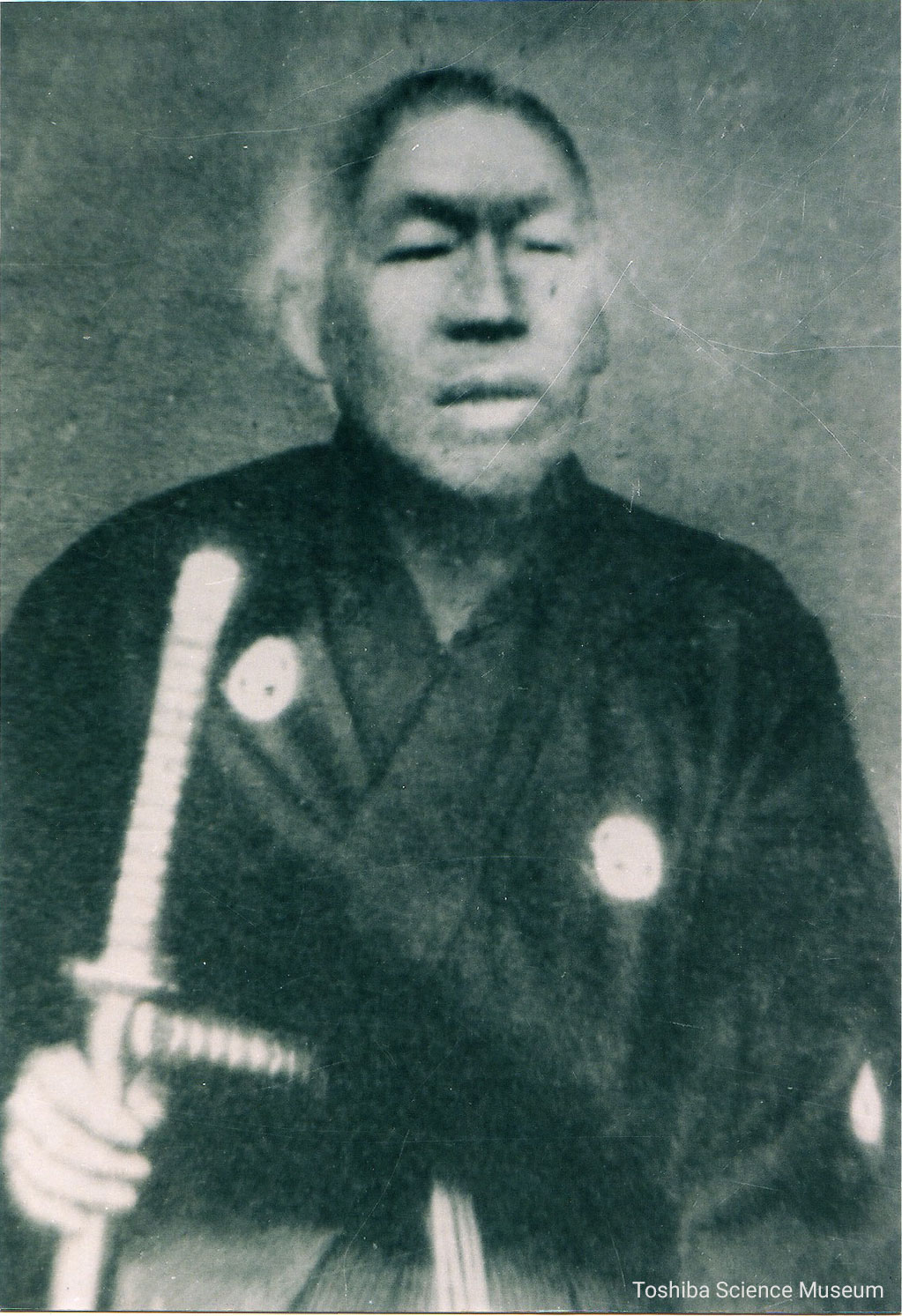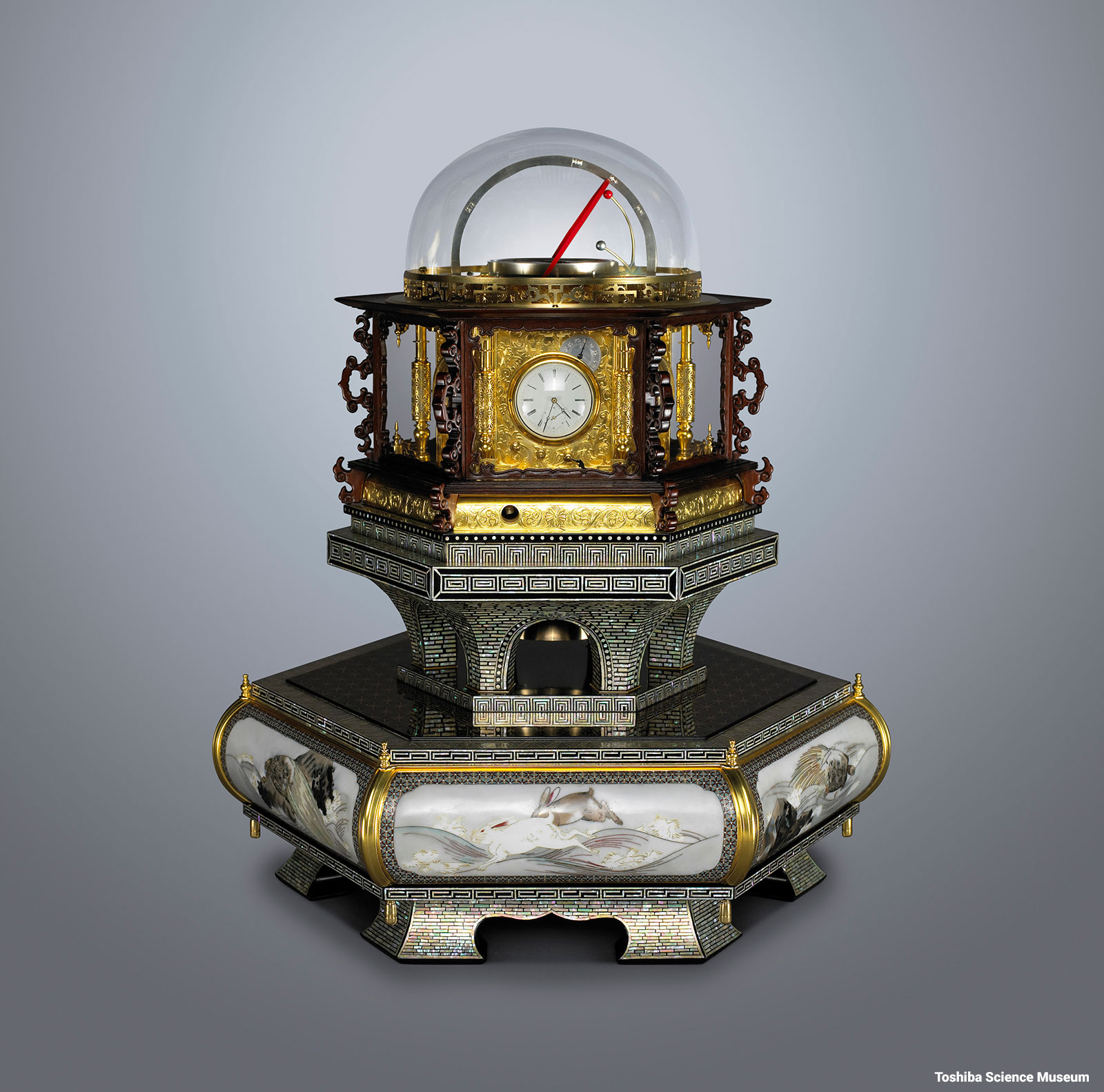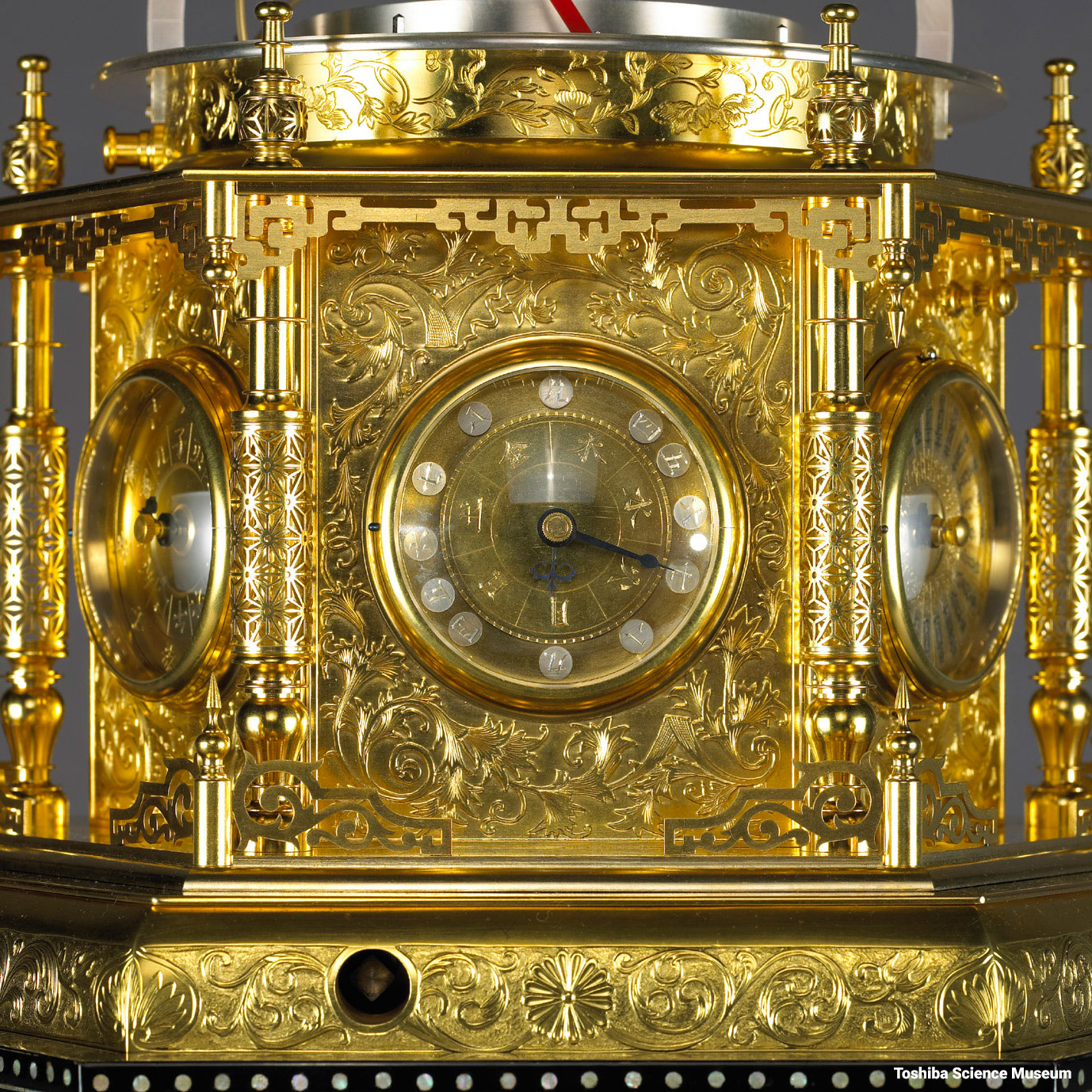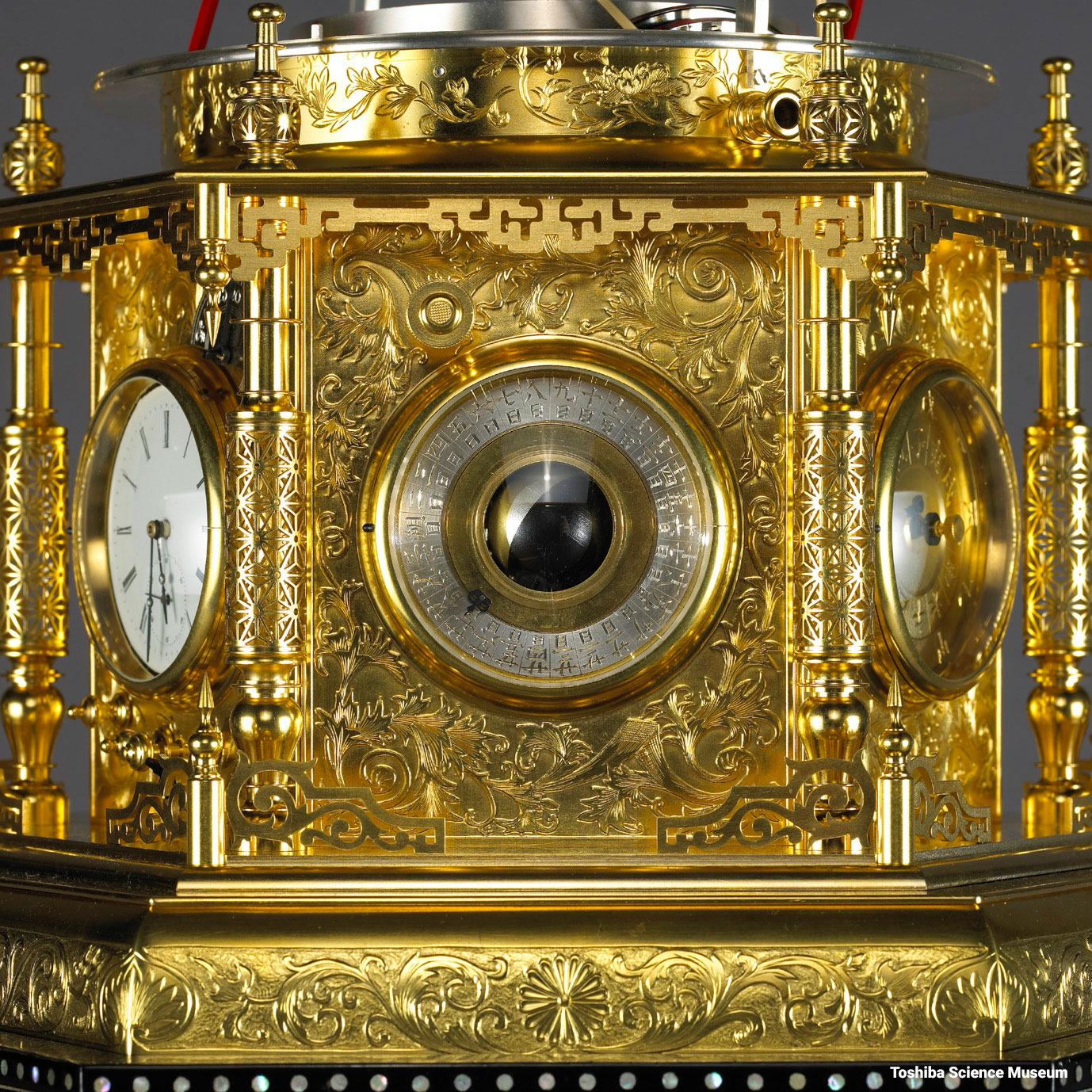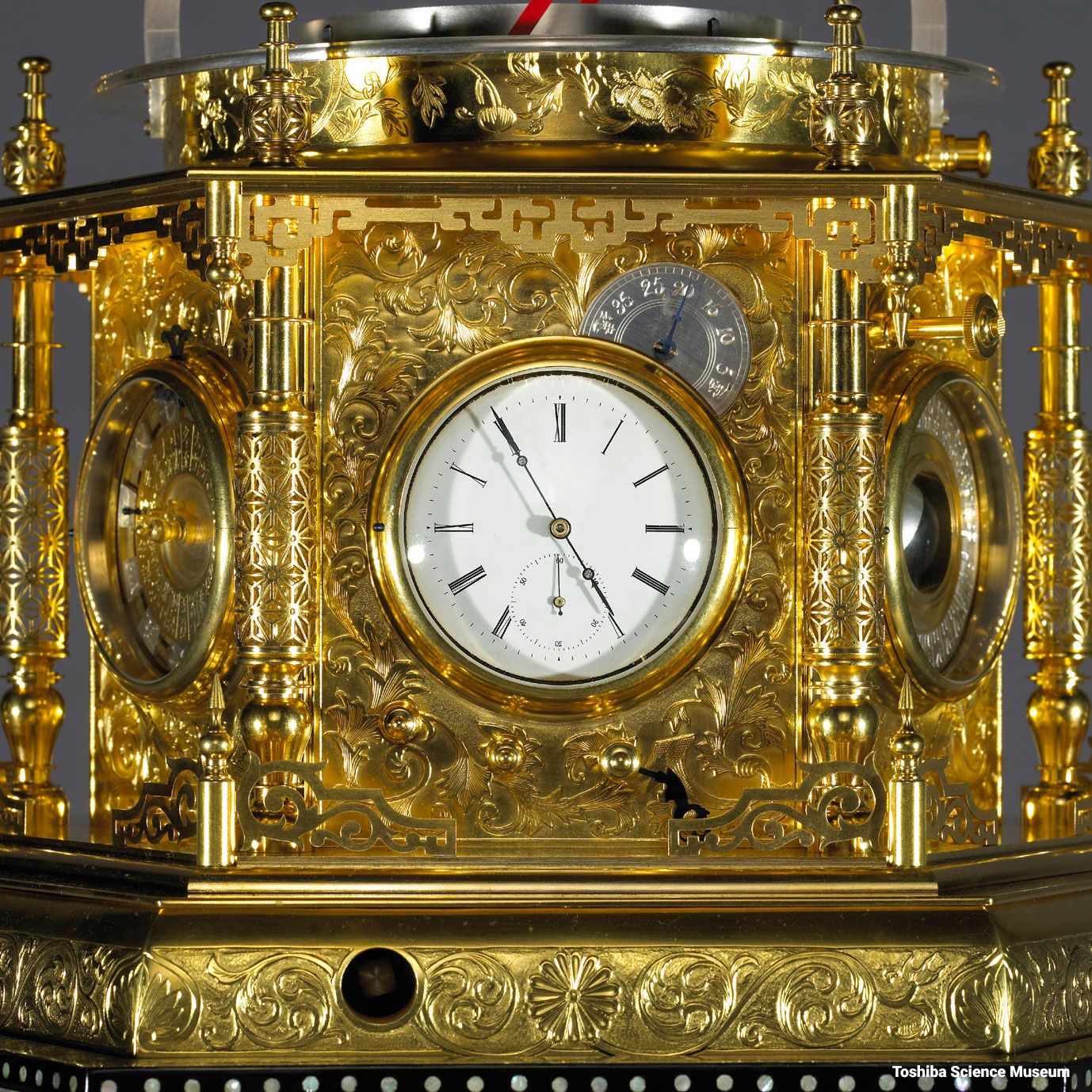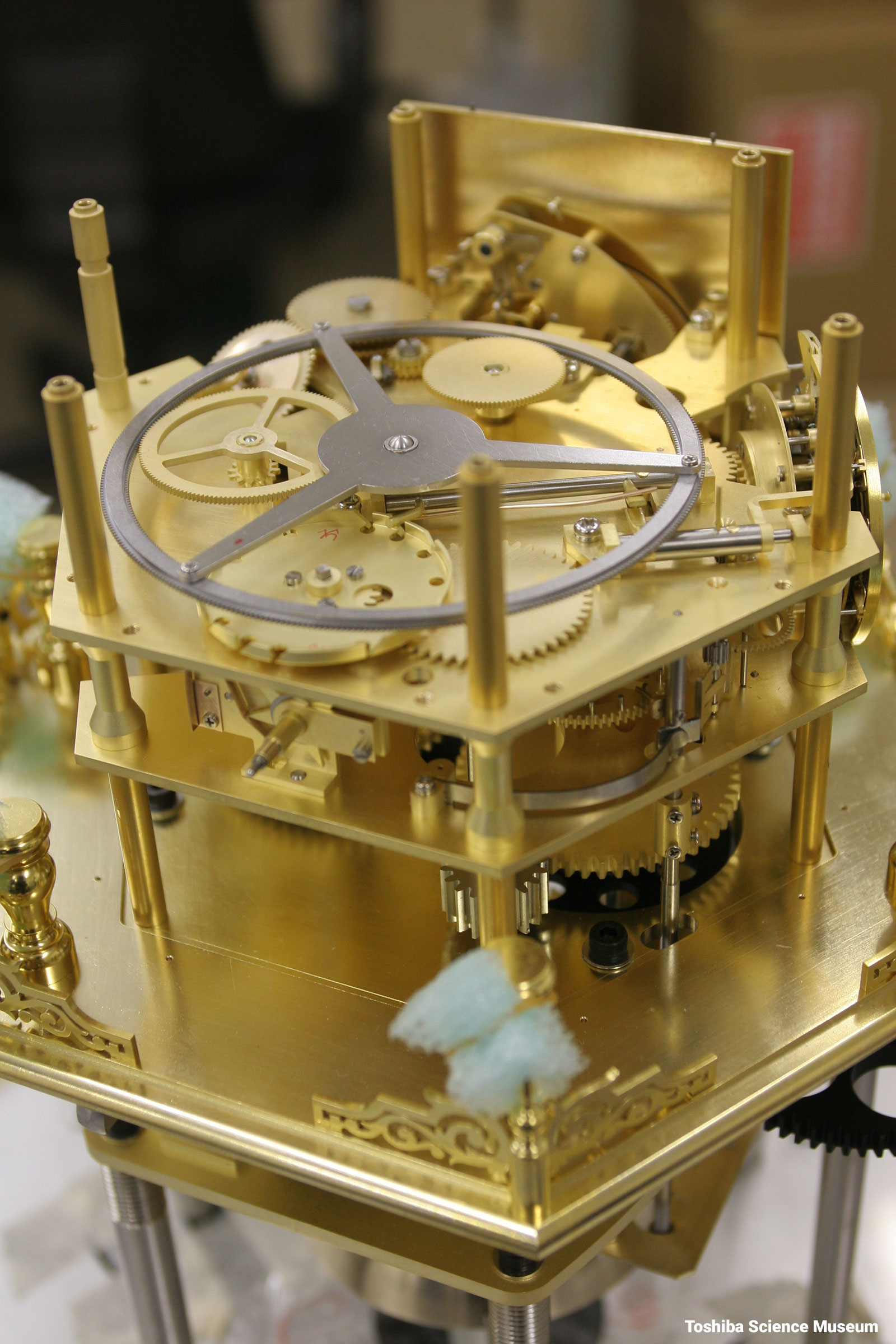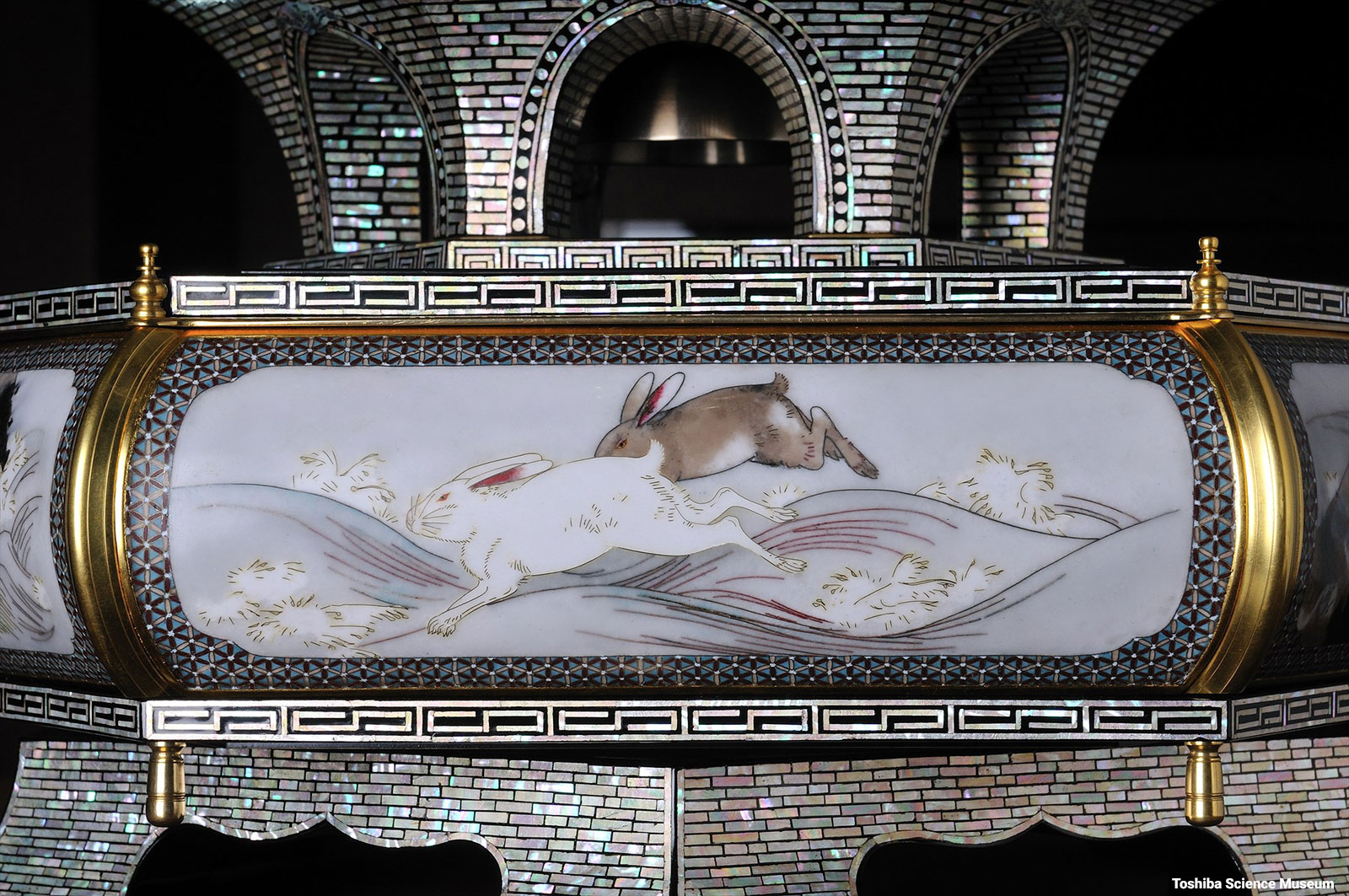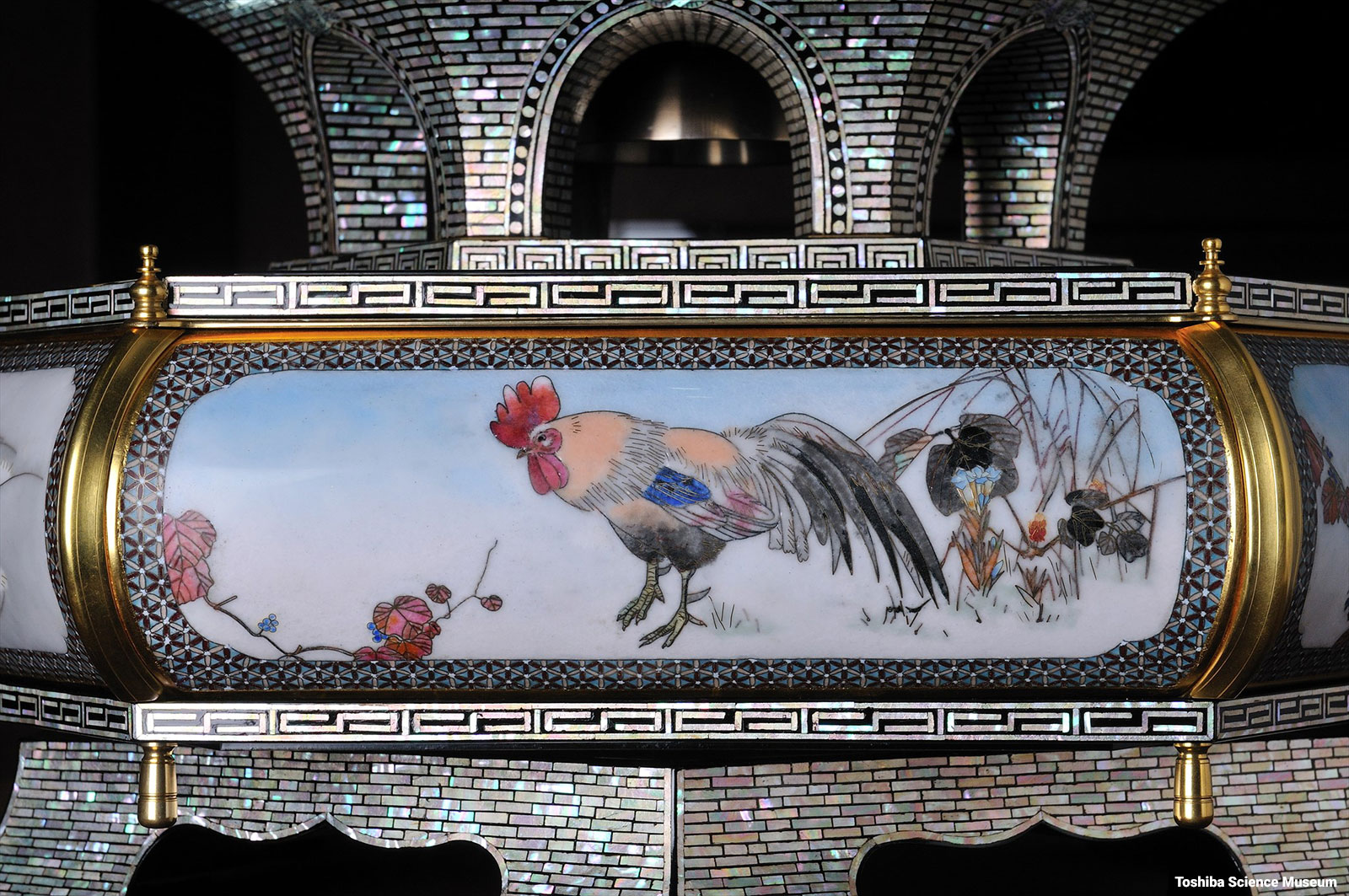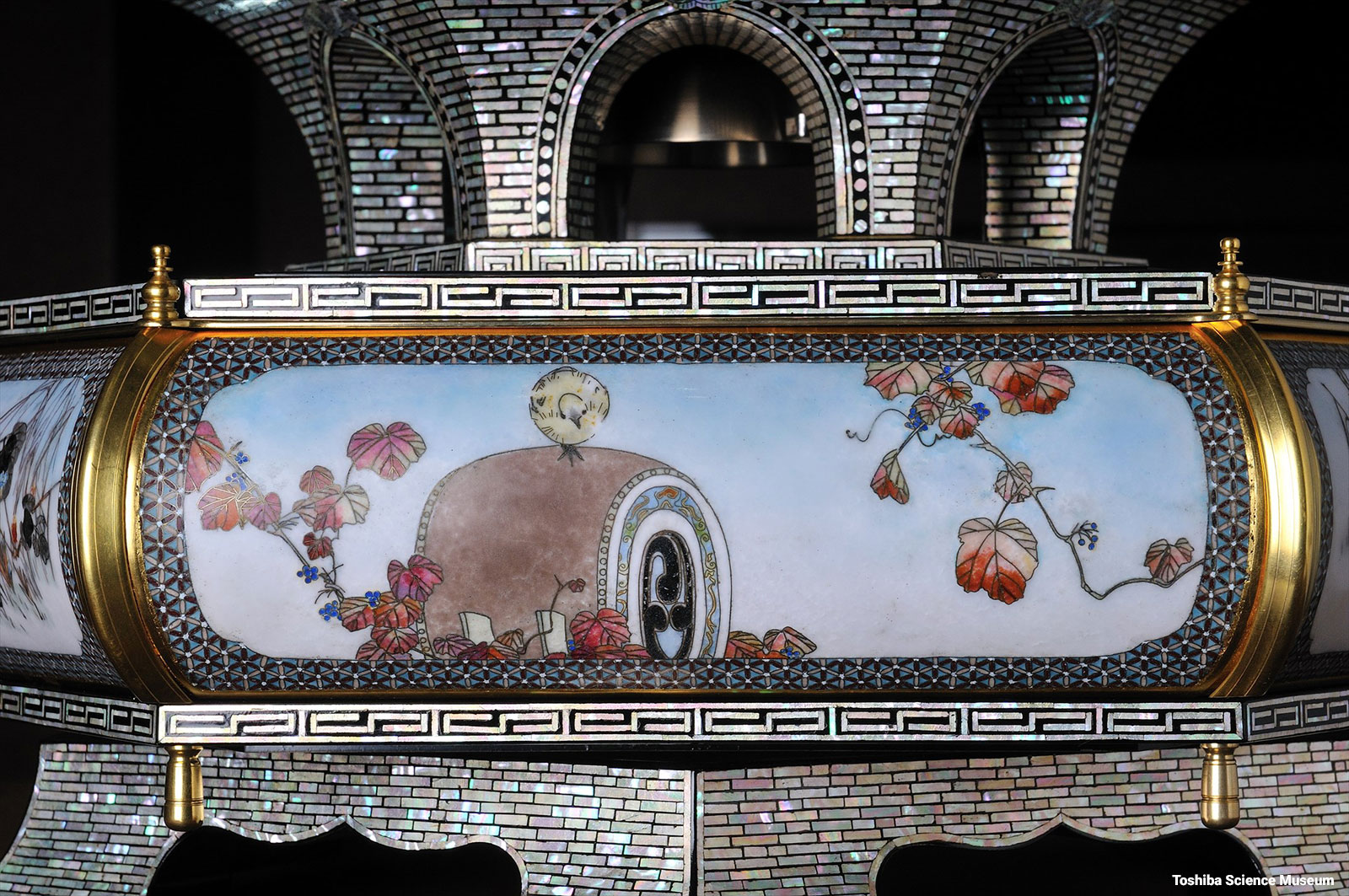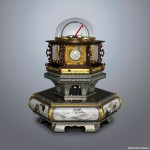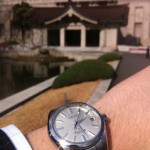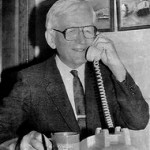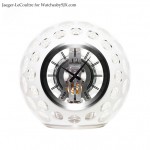How Japan’s Thomas Edison Built the Nation’s Most Complicated Clock
Japan's greatest inventor whose life span a formative period in the nation's history, Tanaka Hisashige built the Myriad Year Clock, a 1000-part masterpiece that's today a national treasure.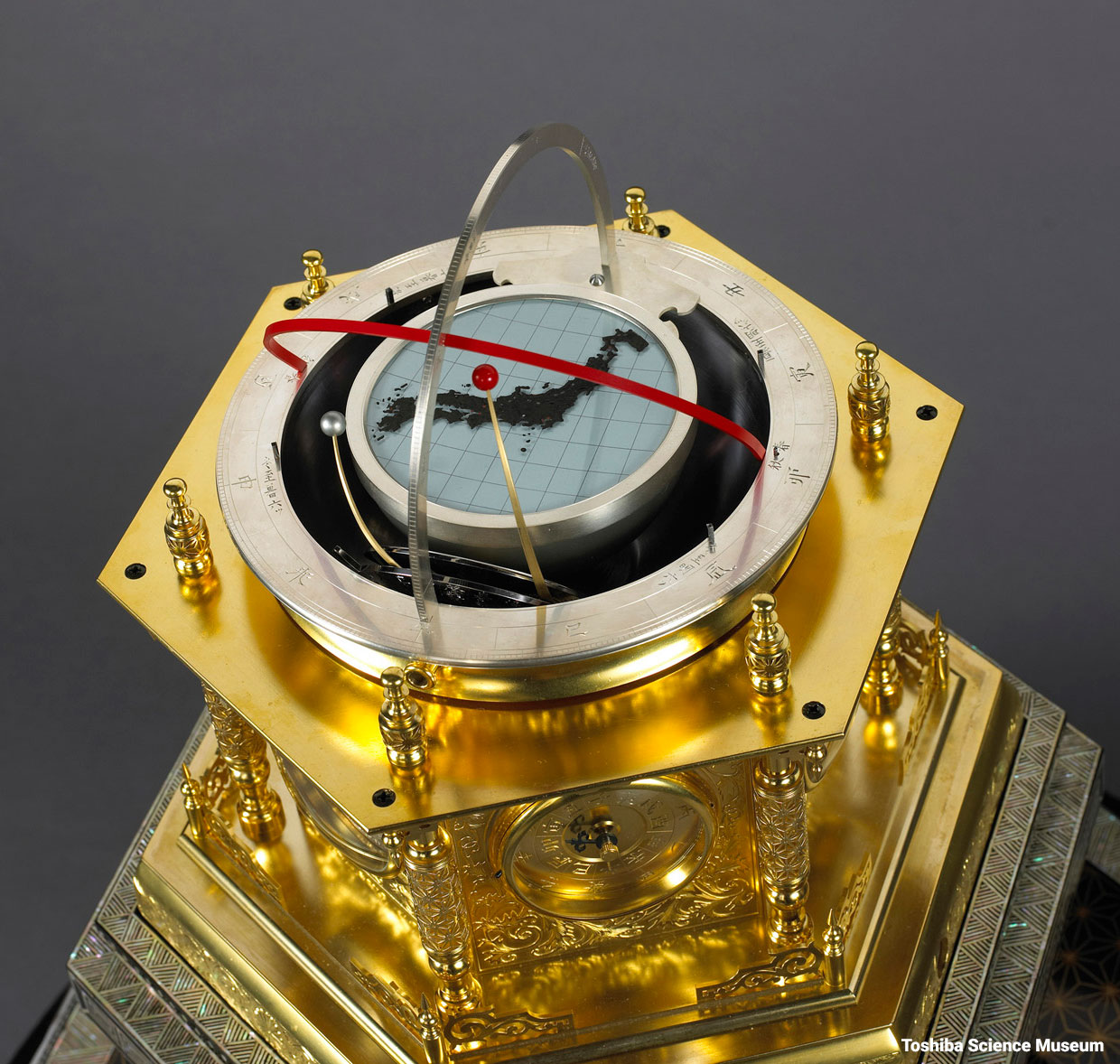
Tanaka Hisashige was a genius of epic proportions, perhaps Japan’s greater inventor ever.
He built the country’s first steam locomotive, steamship, and telegraph, but is best known as the founder of electronics giant Toshiba Corporation. Often cited as the Thomas Edison of Japan, Tanaka was a remarkable figure whose career spanned a crucial era in Japanese history – in the span of his life Japan transformed from an isolated feudal state to a modern industrial power.
Tanaka was a versatile mechanical genius, being the clockmaker who built the most complicated timepiece ever made in Japan, the Mannen Jimeishou (万年自鳴鐘) or Myriad Year Clock. Literally translated as the “million year clock”, Tanaka’s creation is a 1000-part, six-faced masterpiece that’s been designated an Important Cultural Property by the Japanese government, a label bestowed on objects, art, buildings and events that are of a particular significance to the people of Japan.
Karakuri Giemon
Tanaka was born in 1799 in the city of Kurume, located what is now Fukuoka Prefecture on the southern tip of Japan. The son of a tortoiseshell artisan, Tanaka was born in the Edo Period, two centuries when Japan was ruled by the Tokugawa shoguns and feudal lords known as daimyo.
At age 15 Tanaka built a machine that wove the patterned Kurume fabric synonymous with his home town, the very first manifestation of his talent. As a young man, Tanaka began his career making karakuri puppets, small mechanical dolls, leading to the nickname Karakuri Giemon, or “gadget after his infant name of Giemon.
One of his best known inventions was the yumihiki-dozhi, or “little archer”. A mechanical doll sitting on a platform, the yumihiki-dozhi shoots arrows at a target. The doll picks up an arrow, fits it into his bow, eyes the target, and then lets go. Programmed to hit the target three times out of four (the doll carries a quartet of arrows), the doll appears distraught when it misses, and seemingly smiles when the arrow is on target. The facial expressions are accomplished by the moving the doll’s head to give the impression its face is moving.
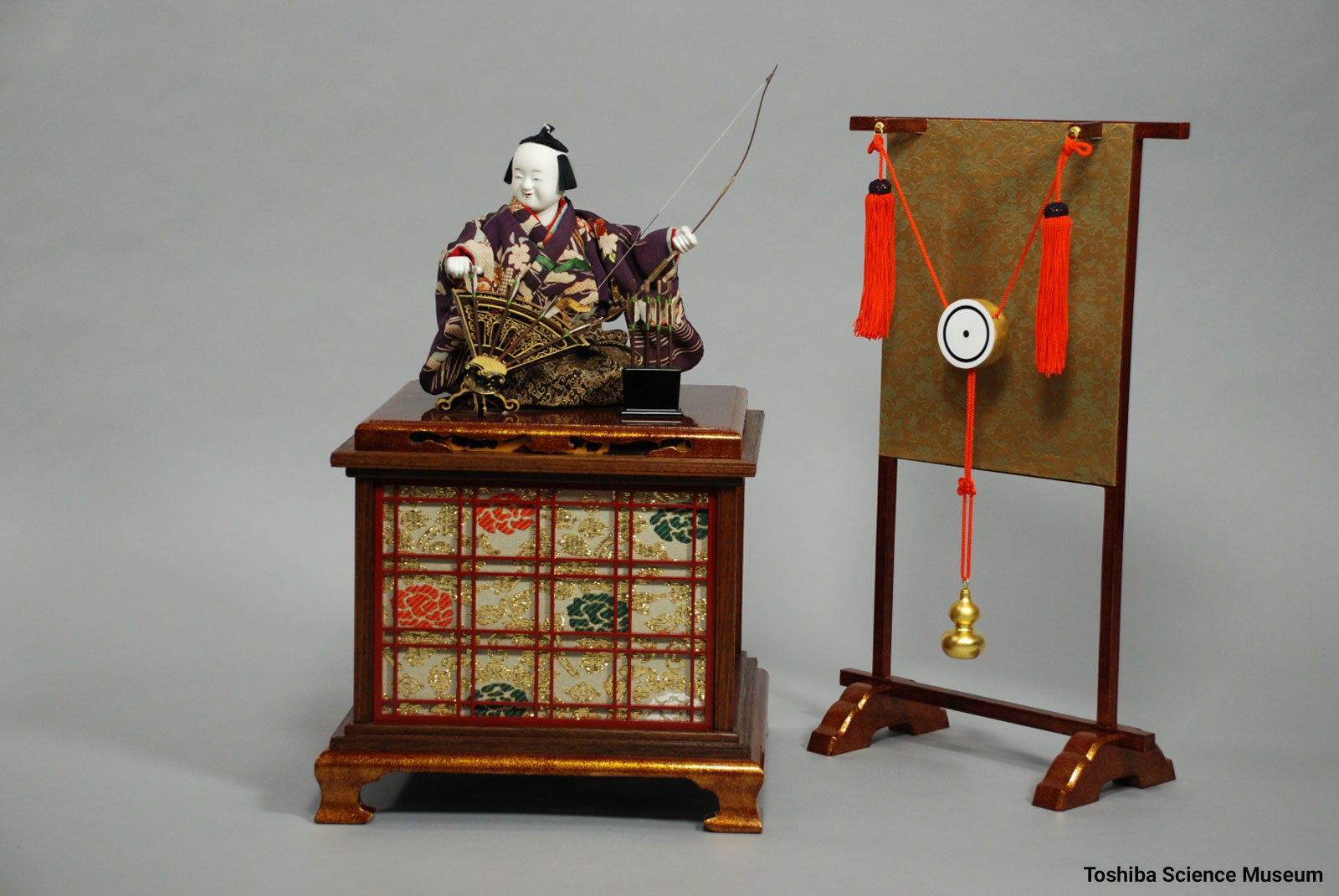
Another of Hisashige’s karakuri, though not one he invented, was the cha-hakobi ningyo, or “tea-serving doll”. A small figure bearing a porcelain cup of tea, the cha-hakobi ningyo travels across the floor to serve tea. Once the cup is lifted off the serving tray, the doll stops. Replacing the cup back on the tray triggers the returning mechanism: the doll then automatically turns and roll back to the host. Such automatons were popular with feudal lords and members of the Shogun’s court, analogous to how Swiss automaton makers like Pierre Jaquet Droz found success at the royal courts of Europe and China in the 18th century.
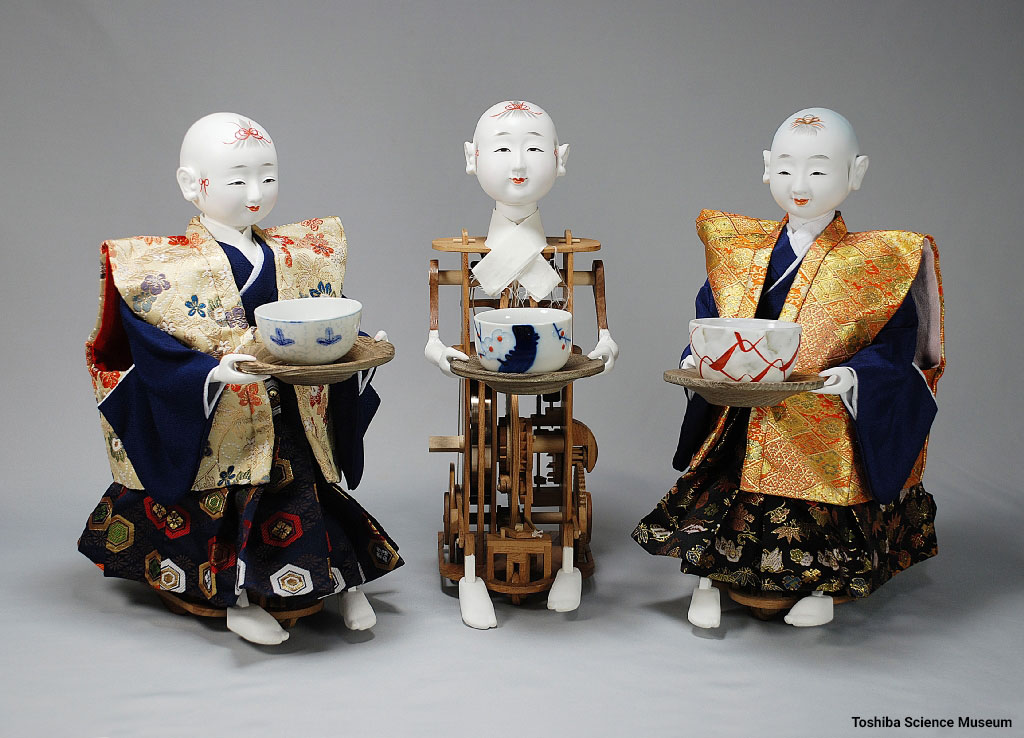
Tanaka moved to Kyoto in 1837 and continued his streak of inventiveness, devising, amongst other things, a firefighting water pump and an oil lamp equipped with a pressurised oil pump that burned brighter and longer than ordinary lamps. But as Tanaka became one of the nation’s foremost inventors, Japan was changing drastically around him.
Massive societal upheaval was the immediate consequence of the Meiji Restoration of 1868, a pivotal moment in Japanese history. A year earlier, the 15th Tokugawa Shogun resigned while the Emperor of Japan was restored to power, after centuries as a mere figurehead. Those events sparked a brief civil war between traditionalists who wanted to keep Japan an isolated feudal state and the modernisers who supported the Emperor, but the die had already been cast. Japan was already on its way into the industrial age since Commodore Perry arrived in Japan on his Black Ships in 1853.
The Meiji Restoration was the end of the feudal system, leading to the abolition of the samurai class and paving the way for the rise of an industrialised nation. By 1905 Japan had become a modern industrial power when it decisively beat the Tsar’s navy in the Russo-Japanese War.
Japan’s transformation was radical and rigorous. Even the manner in which time was kept changed, going from the traditional Japanese time system of temporal hours that varied with the seasons to the Western timekeeping used today.
The Mannen Jimeishou
Tanaka’s clock was a masterpiece of the old order. Having spent several years learning about astronomy and the cosmos, Tanaka began work on the Mannen Jimeishou in 1848. Sleeping only a few hours each day, he spent three years building most of the clock himself, finally completing the project in 1851.
Standing 63cm high and weighing 38kg, the Myriad Year Clock runs for an entire year when fully wound. The secrets of the clock were uncovered in 2004, when it was taken apart to build a replica for the Expo 2005 World’s Fair in Japan. Funded by the Japanese government, the Mannen Jimeishou replica took a team of over 100 specialists, including engineers from Seiko (which even recalled a retired watchmaker to help), an entire year to complete. Just taking the clock apart to analysing its components and figure out the mechanics took five months.
Recreating the constituent parts of the clock was another mighty undertaking. Specialised equipment had to be built to fabricate certain components, including a coiling machine to wind the large brass mainsprings that power the clock. Even so, certain components of the original could not be recreated exactly; for instance, steel were substituted for the replica mainsprings as the original brass alloy was impossible to reproduce.
The six faces of genius
The upper section of the clock is six-sided, with six faces displaying different aspects of time. The first face is a wadokei, a Japanese clocks that tells traditional time where the hours varied according to the seasons; daylight hours being longer in summertime and shorter in winter for instance. Powered by the most complex individual movement in the clock, the wadokei face indicates daytime on the upper half of the dial, and nighttime on the lower half, each half divided into six segments that vary with the seasons.
Time is indicated via a pointer fixed on the bezel at 12 o’clock, with the face making one counterclockwise rotation a day to show the time. But because traditional Japanese time is seasonal, the silver discs with numerals for the hours move gradually throughout the year. During spring and summer, the discs indicating daytime spread apart, since days and longer, with the opposite happening during winter. During the summer solstice, the daytime discs are the furthest apart, with the nighttime discs so close as to be almost touching.
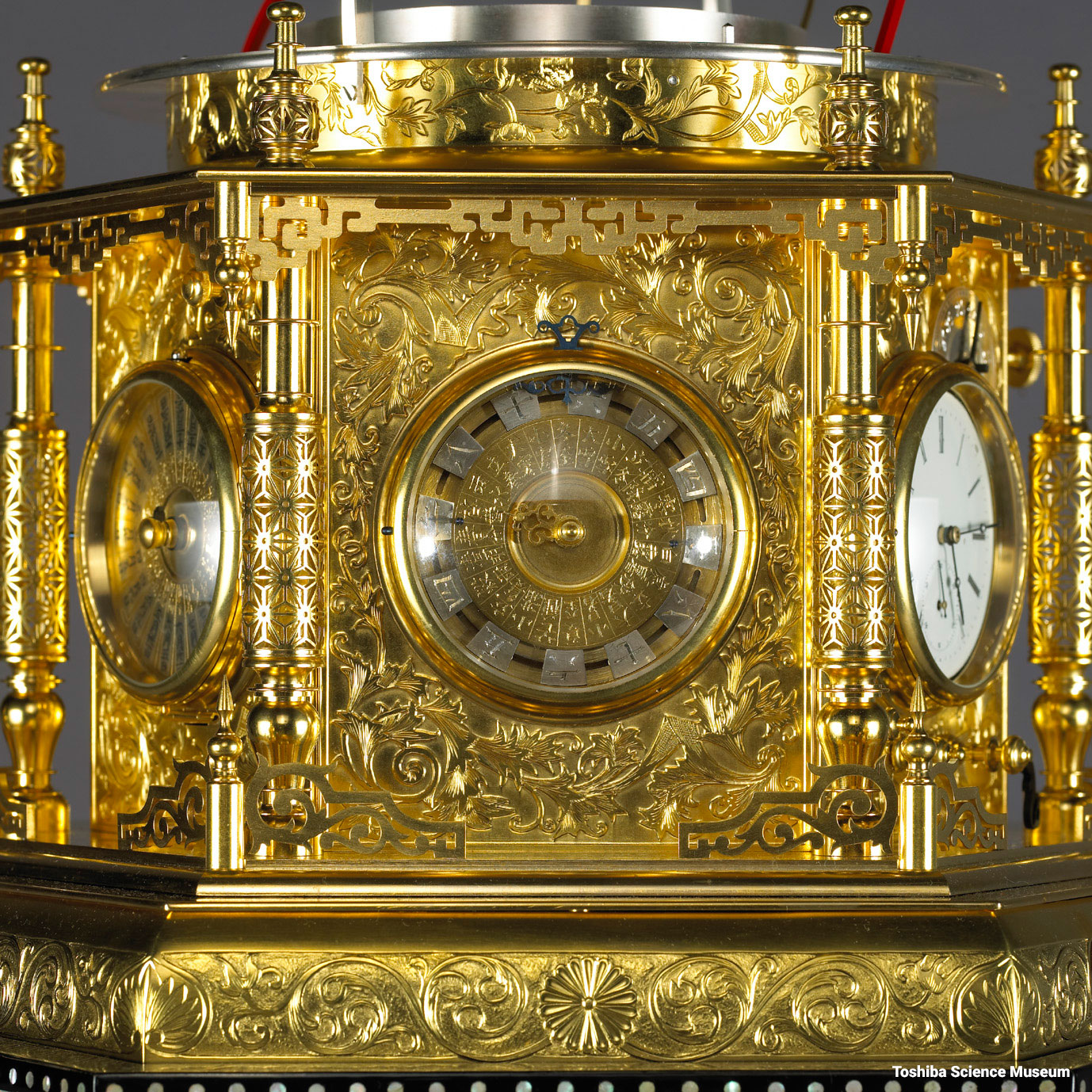
Wadokei dial
Tanaka’s wadokei is extraordinary because it automatically takes into account the changing lengths of the day as the seasons change, unlike ordinary wadokei of the period that required adjusting weights or replacing the time display scale to keep track of the time.
The second face shows the 24 seasonal periods of the traditional Japanese solar year, a display that is set manually via tilting the dial outwards to reveal the mechanism inside.
A third face shows days of the week on a short hand, while a long hand indicates the hours via a link to the wadokei; the time display here serves as an indicator for the hour striking mechanism of the clock that chimes a bell.
The next dial indicates the date according to the Chinese sexagenary cycle. This is a sixty-term calendar that indicates the day based on the ten lunar calendar signs (known as Celestial Stems) and the twelve signs of the Chinese zodiac (also known as Earthly Branches).
On the fifth face an outer ring displays days of the month according to the lunar month, while a sphere in the centre shows the phases of the moon.
The very last face is actually that of an unsigned, time-only French, or possibly Swiss, pocket watch that acts as the regulating organ of the Myriad year clock.
Sitting above the clock faces under a glass dome is an armillary sphere. Two small globes, representing the Sun and Moon, orbit around a glass plate depicting the island of Japan with the ancient capital of Kyoto at its centre, indicating the position of the Sun and Moon relative to the Earth in real time.
365-day power reserve
There was no electricity in Japan when Tanaka unveiled the Myriad year clock in 1851, making it remarkable that the clock could run for a full year on its own. The secret to the power reserve are four large mainsprings hidden inside the base of the clock that are wound by a crank inserted into the case.
Made of a brass alloy composed of copper and zinc, the mainsprings were made by master swordsmiths who hammered and coiled them by hand. They are housed in barrels 15cm in diameter, large enough the barrels barely fit in the palm.
Each pair of barrels is connected by a chain to ensure they unwind in sync and consistently. One set of barrels powers the wadokei, sexagenary indicator, moon phase, armillary sphere, and winds the Western pocket watch. The other pair of barrels powers the other functions, including the bell striking mechanism that sounds the time.
Measuring 3.7m long and some 2mm thick, each mainspring stores an enormous amount of power. Regulating the flow of power to ensure it is constant through the year, particularly as the mainsprings wind down, are two sets of chain and fusee mechanisms, one for each pair of barrels. Relying on the principle of leverage to even out the transmission of power, the chain and fusee is the same mechanism found in marine chronometers (and some modern day wristwatches).
The definition of hand-made
During the year-long project to produce a replica of the Myriad year clock, engineers studied each and every part of the mechanism to determine how Tanaka fabricated the components. After examining the gears under a microscope, they concluded that Tanaka had made all the gears by hand, cutting every tooth on every wheel manually using a file. And then Tanaka manually adjusted individual teeth, once again with a file, to ensure they meshed correctly in operation.
Despite being primitive and painstaking, the fruits of Tanaka’s labour are incredibly precise. The automatic adjustment for the seasons on the wadokei is possible thanks to a gear that’s shaped like a rhinoceros beetle, with irregularly spaced teeth. An exact replica of the bug-shaped gear was tested against a computer-generated simulation of an ideal gear and extraordinarily, Tanaka’s hand-made gear performed almost well as the simulation, with no humanly discernible error in the resulting time display.
Lavish decoration
Tanaka ensured the exterior of his masterpiece was as worthy of the monumental mechanics inside. Several traditional Japanese carpentry techniques were used to decorate the clock in lavish style.
Most of the clock structure is covered with tiny slices of mother of pearl inlaid into the black lacquer surface, a technique known as raden. The base of the clock, which is six-sided like the dials, conceals the mainsprings and is panelled with hand-painted enamel-on-metal inlays, while the top surface is decorated with maki-e, traditional Japanese lacquer with the motif formed by gold powder.
The Tanaka legacy
Tanaka’s clock was so complex that it proved impossible to sell, and only one was made. But Tanaka had by then turned his eye to more practical inventions, building Japan’s first steamship in 1865 when he was 66 years old. By the time Tanaka passed away in 1881, he was one of the nation’s foremost inventors, having established Japan’s first telegraph manufacturer in Tokyo just a few years earlier at the behest of the Japanese government.
After taking over the firm after Tanaka’s death, his son renamed the company Tanaka Seisakusho (or “Tanaka Engineering Works”), but financial difficulties meant the enterprise was taken over by creditor Mitsui Bank, which renamed it Shibaura Seisakusho. In 1939, Shibaura Seisakusho merged with Tokyo Denki to form Tokyo Shibaura Denki, or Toshiba.
And on what would have been Tanaka’s 213th birthday, he got his own Google Doodle, with the logo on the search engine’s homepage turned into a calligrapher karakuri puppet.
Viewing the clock and replica
The original Myriad year clock is now owned by Toshiba Corporation and on permanent display at the National Museum of Nature and Science in Tokyo. The replica of the clock, meanwhile, is on show at the Toshiba Science Museum in Kawasaki, a city located a half hour from Tokyo by train.
Toshiba Science Museum
2F Lazona Kawasaki Toshiba Bldg.
72-34, Horikawa-Cho
Saiwai-Ku, Kawasaki 212-8585
Japan
National Museum of Nature and Science
7-20 Ueno Park
Taito-ku, Tokyo 110-8718
Japan
Thanks to the Toshiba Science Museum, NHK and University of Tokyo Center for Philosophy (UTP) for information on the clock. All images courtesy of the Toshiba Science Museum.
Additions September 8, 2016: Portrait of Tanaka Hisashige included.
Back to top.

